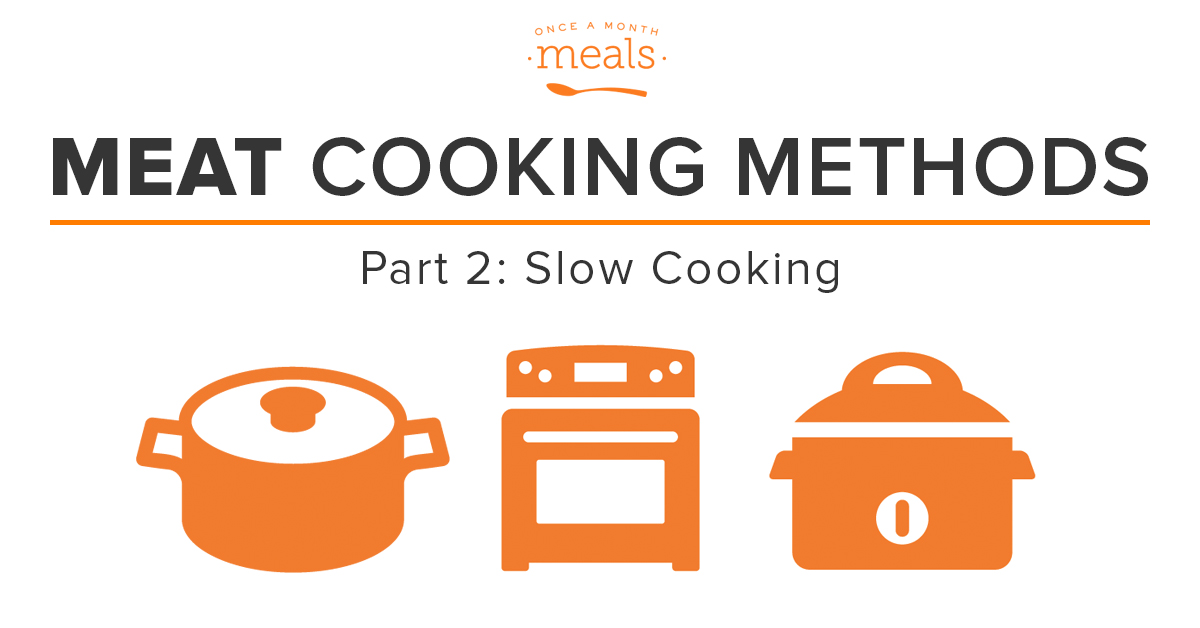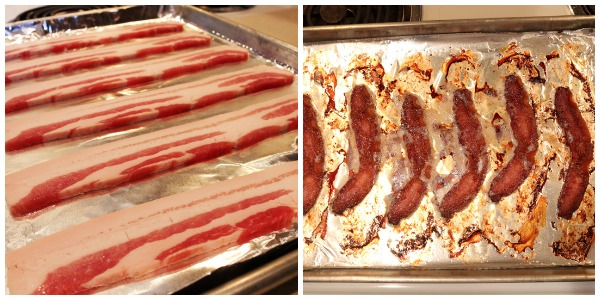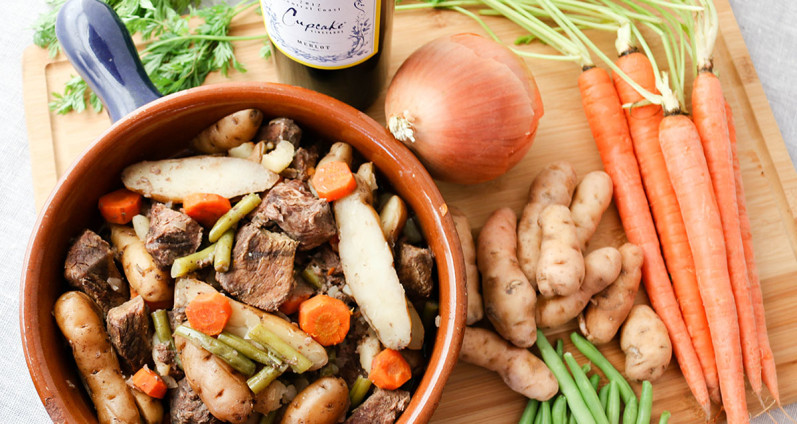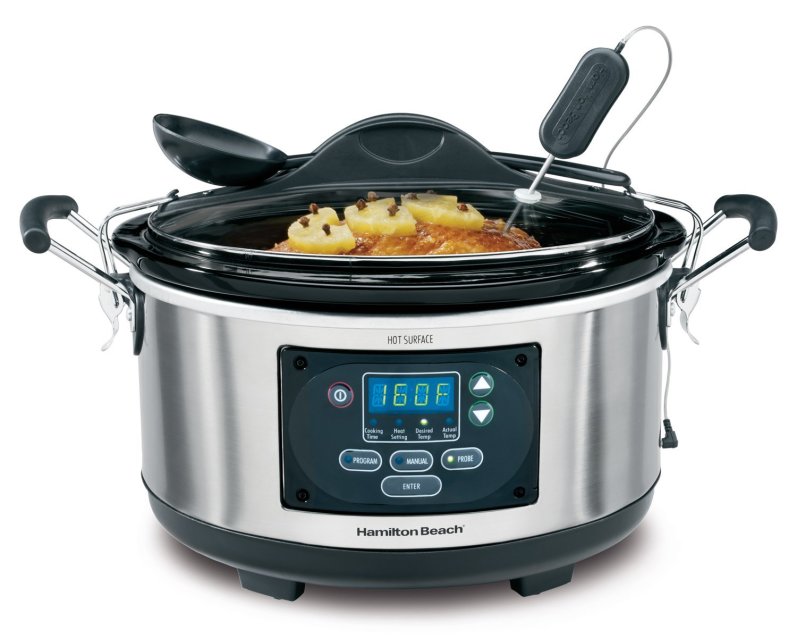 We return with the second part of our tutorial on meat cooking methods in hopes of boosting your confidence in the kitchen on cooking day. In Part 1 we discussed types of meat that are best cooked quickly and the methods for doing so, along with some sample recipes for practice. Of course, we couldn’t leave out information on food safety protocols when cooking meat to different levels of doneness. If you need a refresher on kitchen safety, see here and here.
We return with the second part of our tutorial on meat cooking methods in hopes of boosting your confidence in the kitchen on cooking day. In Part 1 we discussed types of meat that are best cooked quickly and the methods for doing so, along with some sample recipes for practice. Of course, we couldn’t leave out information on food safety protocols when cooking meat to different levels of doneness. If you need a refresher on kitchen safety, see here and here.
Today, we move on to cuts of meat that are best cooked slowly. Are you ready for that fall-off-the-bone goodness? Also, we can’t leave this topic without discussing our best tips for prepping meat on your freezer cooking day, because that is what we’re all about.
Meat Cooking Methods: Slow Cooking
As I said before, when cooking different cuts of meat, you want to choose the method that matches your cut. Slow cooking works best for larger cuts of meat that contain bones, connective tissues, and have a higher fat content. Slow cooking helps to render the fat content into delicious drippings and breaks down the connective tissues making the meat more tender. Many slow cooking methods allow for the creation of delicious broths, gravies, and sauces because the liquid is not lost in cooking as in the quick, dry cooking methods above. Another difference between the methods is doneness. In the quick cooking methods, meat is cooked to the desired doneness (rare, medium, medium-well, etc.). However, with slow cooking of tougher or fattier pieces of meat, the dish is always served well done. Cuts that are best slow cooked are:
- Pork shoulder (a.k.a. Boston Butt roast)
- Beef chuck roast or Brisket
- Shanks (for soup) or Stew meat
- Rib roast or Short ribs
Roasting
We will deal with roasting first as it is technically somewhere in between quick cooking and slow cooking. The length of time will really depend on the cut of meat you have chosen. For example, this recipe for Roasted Pork Tenderloin instructs you to sear the meat and then roast it at a high temperature for only a few minutes. You can see that a whole chicken (in recipes like Seaton Sunday Roast Chicken or Ridiculously Delicious Roast Chicken) will take about 1 1/2 – 2 hours. Roasting is ideal for larger, bone-in pieces of chicken as it allows it to reach a safe and even internal temperature without drying out. As the name implies, you can cook a roast (such as our Crusted Prime Rib) using this method. However, roasting is still a dry method. Little to no liquid is added during cooking, and therefore, it works better for cuts that will be served at a specific doneness instead of well done. You will find that many of our roast type recipes at OAMM will fall into the following slow cooking methods, which use liquid.
Braising and Stewing
Braising and stewing are similar techniques in which the meat is submerged (partly or fully) in liquid. Typically a recipe will call for the meat to be seared before it is placed into the liquid to take advantage of the Maillard reaction and add an extra dimension of flavor to the dish. Our World Famous Beef Stroganoff recipe is a good example of this method. You can skip this step and still create a flavorful dish, but it is definitely recommended.
The difference between stewing and braising is the amount of liquid. When stewing the meat is more fully submerged in the liquid, and liquids are often reduced into a thick broth or sauce for the finished dish. The stroganoff recipe above is a good example as is our Guinness Stew. Because the meat is fully submerged, there is no cooking by steam, which is an important part of braising. When braising, a smaller amount of liquid is added to the pan, usually broth, and the dish is covered and baked low and slow until the meat becomes tender (usually 2 or more hours.)
Braising in the oven is a fantastic way to cook larger pieces of meat, but you won’t see it done much around here. We love technology, and there is a fantastic tool in our kitchen that allows us to braise without the fuss: the slow cooker!
Slow Cooking in a Crockpot
Tender Braised Short Ribs uses the name of the method we just discussed, but if you take a closer look, you will see that this is a slow cooker recipe (actually the stroganoff recipe is too!). When you use the slow cooker, you are actually stewing or braising your meat the easy way (and we all love the easy way right?) The slow cooker is the perfect tool for tenderizing tougher cuts of meat and maintaining all of the delicious juices and drippings. See our post for 101 Freezable Slow Cooker Recipes and baby, you’ve got yourself a stew.
Our new favorite tool gives you the tender results of slow cooking in a fraction of the time! The Instant Pot is a programmable pressure cooker, and cooking under pressure allows you to speed up the process. For example, you can cook a whole chicken in only 30 minutes, or create pulled pork from a shoulder roast in about an hour and a half!
How to Prep Meat for Your Freezer Cooking Day
As you approach your big freezer cooking day, you will notice that some of your meats will need to be prepared the night before. These will be listed on your prep instructions along with your chopping list. Having some of your meat prepared in advance helps to make the cooking day more efficient. The meat will be ready to go into soups, casseroles, and dump and go recipes with no fuss.
Ground Beef
It takes a very large pan and a lot of elbow grease to brown several pounds of ground beef (or other ground meats) for your freezer cooking recipes. Enter our favorite kitchen tool, the slow cooker! Follow these instructions for browning ground Beef in the slow cooker. Sounds crazy but it works like a charm, and your arm won’t get tired from stirring. Check out our Sliced and Diced Series for a conversion chart from pounds to cups.
Cooked, Shredded Chicken
Another common item on the prep list is cooked shredded chicken. You can cook both boneless, skinless chicken breasts or a whole chicken in the crockpot easily. Again, this frees up your hands on time for your chopping list. Once the chicken is cooked, you can cool it and shred it. If you have a Kitchen Aid mixer, you can save even more time by using the paddle attachment to shred instead of doing it by hand. Check out our Sliced and Diced Series for a conversion chart from pounds to cups as well as our tutorial for DIY Rotisserie Chicken in the Slow Cooker.

Bacon
Bacon can be a messy business. But we love bacon, and we want to make it easy for you to include it in your freezer meals. Our best tried and true tip is to cook your bacon in the oven. Cover a rimmed baking sheet with aluminum foil and lay the bacon out in a single layer on the sheet.
Bake at 350 for 15-20 minutes (you may need up to 25 minutes for thick cut bacon) or until crisp. Remove bacon from the baking sheet and drain on a paper towel-lined plate. If you need the baking sheet for another batch, remove drippings first (I save mine in a mason jar!) Check out our Sliced and Diced Series for a conversion chart from pounds to slices and cups.
Additional Resources
- See the other posts in our Cooking School Series – Meat Cooking Methods – Part 1, Use Cooking Aromatics to Enhance Flavor, and How to Make a Roux and Improve Your Cooking
- How to Check Your Steaks with No Thermometer!
- How to Roast a Turkey
- OAMC Trick: Browning Ground Beef
- OAMC Tip: Shred Your Chicken with Your Kitchen Aid (video)
- Making the Most of Meat
- How to Cut a Whole Chicken
- For more details on all of the different cooking methods, see the site How to Cook Meat

